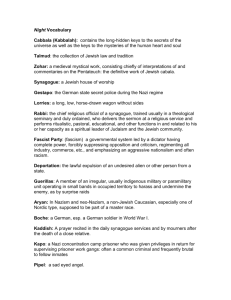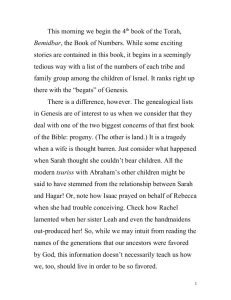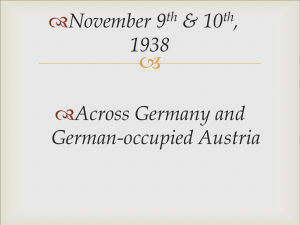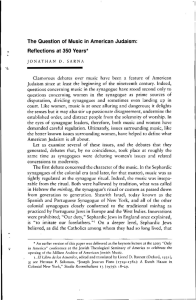Workshop II of the Academic Network Yosef Kaplan (Jerusalem)
advertisement
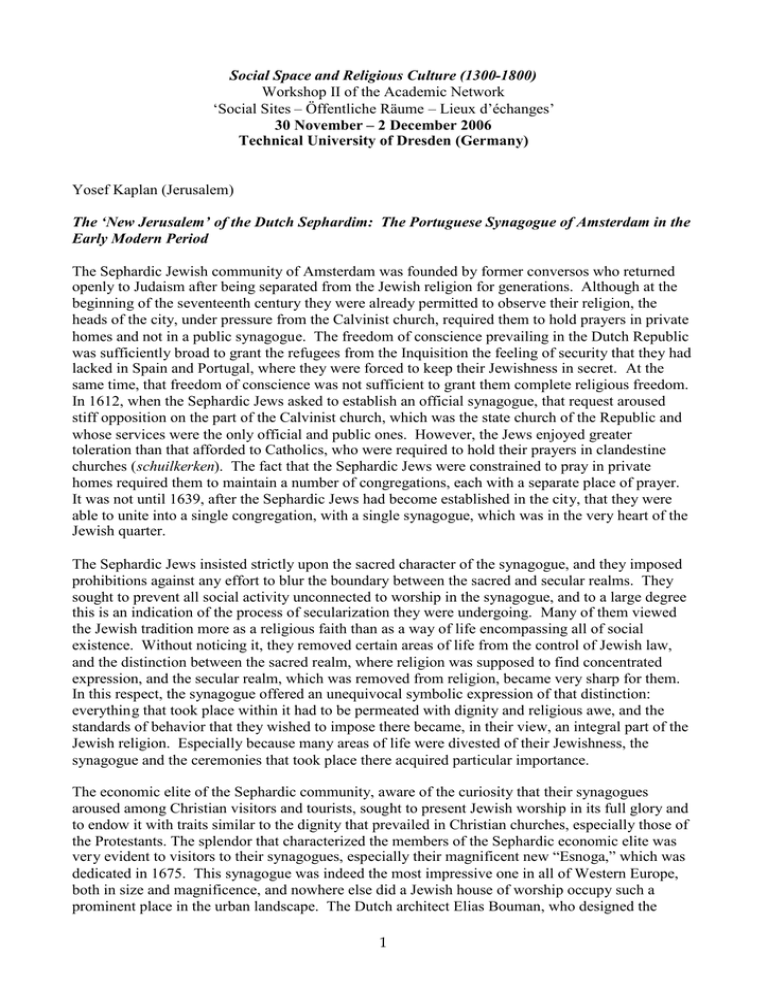
Social Space and Religious Culture (1300-1800) Workshop II of the Academic Network ‘Social Sites – Öffentliche Räume – Lieux d’échanges’ 30 November – 2 December 2006 Technical University of Dresden (Germany) Yosef Kaplan (Jerusalem) The ‘New Jerusalem’ of the Dutch Sephardim: The Portuguese Synagogue of Amsterdam in the Early Modern Period The Sephardic Jewish community of Amsterdam was founded by former conversos who returned openly to Judaism after being separated from the Jewish religion for generations. Although at the beginning of the seventeenth century they were already permitted to observe their religion, the heads of the city, under pressure from the Calvinist church, required them to hold prayers in private homes and not in a public synagogue. The freedom of conscience prevailing in the Dutch Republic was sufficiently broad to grant the refugees from the Inquisition the feeling of security that they had lacked in Spain and Portugal, where they were forced to keep their Jewishness in secret. At the same time, that freedom of conscience was not sufficient to grant them complete religious freedom. In 1612, when the Sephardic Jews asked to establish an official synagogue, that request aroused stiff opposition on the part of the Calvinist church, which was the state church of the Republic and whose services were the only official and public ones. However, the Jews enjoyed greater toleration than that afforded to Catholics, who were required to hold their prayers in clandestine churches (schuilkerken). The fact that the Sephardic Jews were constrained to pray in private homes required them to maintain a number of congregations, each with a separate place of prayer. It was not until 1639, after the Sephardic Jews had become established in the city, that they were able to unite into a single congregation, with a single synagogue, which was in the very heart of the Jewish quarter. The Sephardic Jews insisted strictly upon the sacred character of the synagogue, and they imposed prohibitions against any effort to blur the boundary between the sacred and secular realms. They sought to prevent all social activity unconnected to worship in the synagogue, and to a large degree this is an indication of the process of secularization they were undergoing. Many of them viewed the Jewish tradition more as a religious faith than as a way of life encompassing all of social existence. Without noticing it, they removed certain areas of life from the control of Jewish law, and the distinction between the sacred realm, where religion was supposed to find concentrated expression, and the secular realm, which was removed from religion, became very sharp for them. In this respect, the synagogue offered an unequivocal symbolic expression of that distinction: everything that took place within it had to be permeated with dignity and religious awe, and the standards of behavior that they wished to impose there became, in their view, an integral part of the Jewish religion. Especially because many areas of life were divested of their Jewishness, the synagogue and the ceremonies that took place there acquired particular importance. The economic elite of the Sephardic community, aware of the curiosity that their synagogues aroused among Christian visitors and tourists, sought to present Jewish worship in its full glory and to endow it with traits similar to the dignity that prevailed in Christian churches, especially those of the Protestants. The splendor that characterized the members of the Sephardic economic elite was very evident to visitors to their synagogues, especially their magnificent new “Esnoga,” which was dedicated in 1675. This synagogue was indeed the most impressive one in all of Western Europe, both in size and magnificence, and nowhere else did a Jewish house of worship occupy such a prominent place in the urban landscape. The Dutch architect Elias Bouman, who designed the 1 building, appears to have been influenced to some degree by the model of King Solomon's Temple, which was built by Rabbi Jacob Juda Leon Templo, and which became an attraction for travelers who visited the small museum that Templo established in his home. In general, the members of the community were highly receptive toward Christian visitors. The worshipers sitting behind the reader's platform functioned as ushers when necessary, to enable non-Jews to sit in the synagogue, on condition that this was carried out in an orderly manner. They wanted to present themselves to the gentile visitors as “gente politica,” that is to say, courteous people, and the services in the synagogue were supposed to be held in accordance with this ideal. In the second half of the eighteenth century, an ideological shift derived from rabbinical circles softened the sharp distinctions between the sacred sphere of the synagogue and the totality of life. Seeing both the weakening of the social elite and the processes of assimilation and secularization, which led some of the Portuguese Jews to remove themselves from active participation in the community, the traditional tendencies might have grown stronger among the kernel remaining loyal to the community. 2
